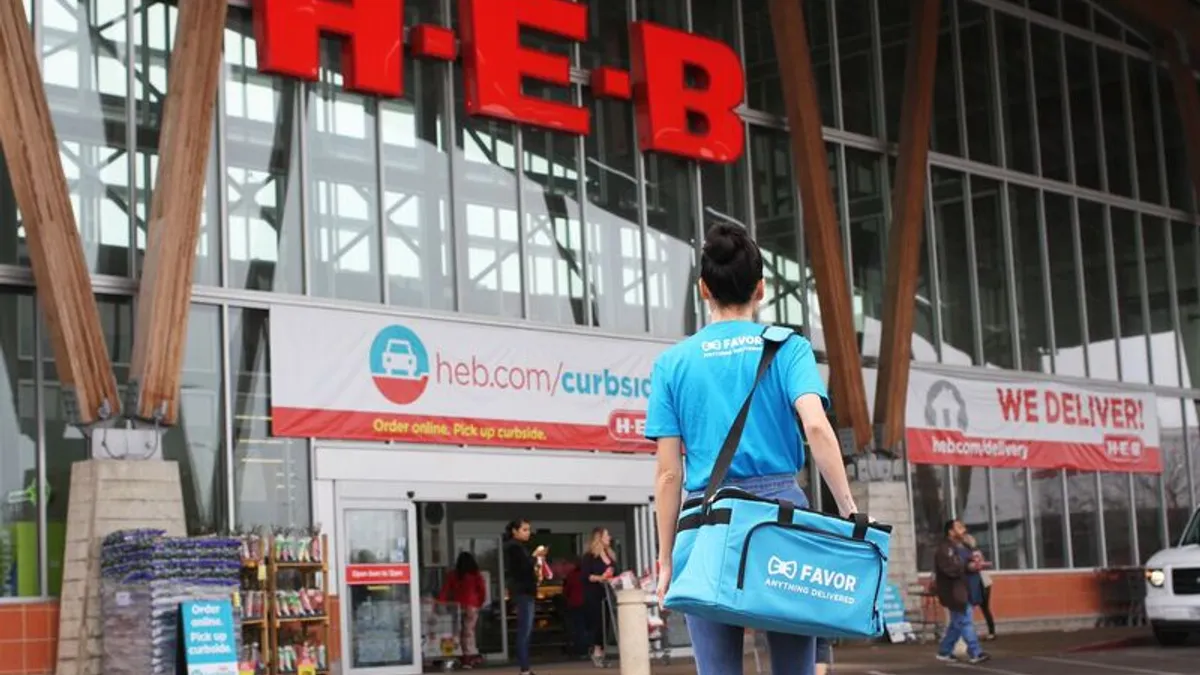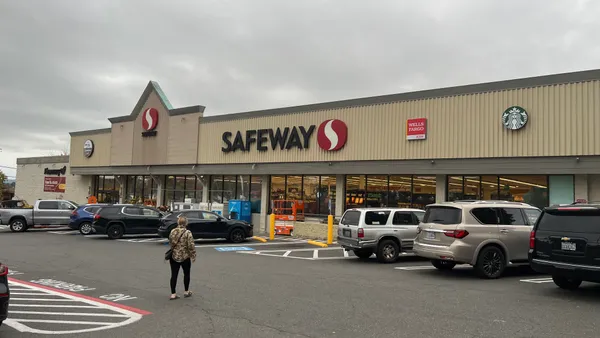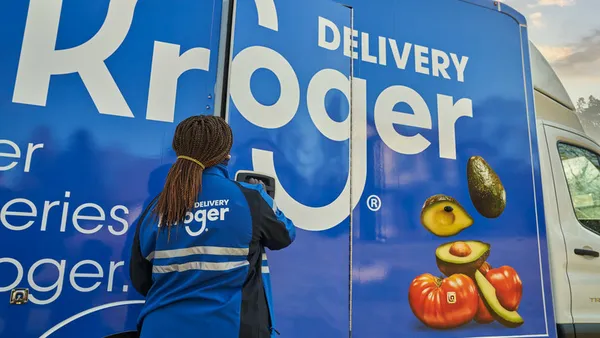Dive Brief:
- Regional grocers’ same-store online sales were down 13.5% during the third quarter compared to the same period last year, according to data released Wednesday by Brick Meets Click and sponsored by Mercatus.
- Of the 25 banners that participated in the research, only three reported positive year-over-year e-commerce sales growth during the quarter.
- Sagging retention of online customers drove the year-over-year sales decline for regional grocers, the report noted.
Dive Insight:
Regional grocers’ grocery e-commerce is struggling with a higher rate of lapsed shoppers who have either gone back to in-store buying or switched to a competitor’s online offerings, according to the report.
The report is based on transactional-level electronic point-of-sale data linked to non-personally identified information from supermarket banners that sell groceries online via a first-party website, a mobile application or both.
Along with online sales, total order volume on a same-store basis for regionals was down 16.8% compared to a year ago due to a shrinkage in the base of active customers, per the report. The research found that the number of customers who completed one or more online grocery orders in Q3 declined by 19.8% compared to the same period in 2022.
“[A] comparison of retention rates for different customer cohorts in 2022 versus 2023 highlights that it has only gotten more challenging for regional grocers to keep their online customers active,” the report noted.
The report pointed out that regionals can boost their performance by strengthening e-commerce retention and adoption.
Even as overall volume dropped, active customers completed more orders and spent more per order, with those figures up 7.6% and 4.2% year over year, respectively. The growth for both of those metrics partially offset the order volume decline, Brick Meets Click said.
“Given these shifts, improving customer retention rates is vital for regional grocers. The analysis determined that it requires 2.5 new customers to replace the current value associated with one of the longest-term customers,” David Bishop, partner at Brick Meets Click, said in a statement. “However, a more realistic replacement number is 3.5 new customers, given the fact that only about 30% of new customers will age to the comparable level of one lost long-term customer.”
The longest-term cohort of online customers saw nearly 30% higher average order values and completed twice as many orders as newly acquired shoppers, according to the report.
The Brick Meets Click research aimed to find how regionals have fared with their e-commerce sales at a time when other types of retailers have reported strong year-over-year sales growth in e-grocery this year. The report singled out Walmart as one retailer that has been seeing a surge in its online grocery sales.
Walmart accounted for nearly 36% of U.S. online grocery sales in the second quarter, up 5 percentage points from its share a year prior — marking a new record high for the retailer — Brick Meets Click reported in August.
In October, overall U.S. grocery e-commerce sales totaled $8.2 billion, up 5 percentage points compared to the same month a year ago, driven by increases in pickup and delivery, per research from the firms. Now, customers “have greater access to and higher expectations” when it comes to buying groceries online, Bishop said.
As customer acquisition becomes more challenging, “retention has become the name of the game,” Mercatus President and CEO Sylvain Perrier said in a statement.
"To drive growth, grocers must invest in strategies that increase basket size and the frequency of orders,” Perrier said. “Helping online customers to save time with personalization, discover new products through intelligent promotional pairings, and get more value for money, such as through loyalty programs, are just some of the ways to ensure customers stick around."












